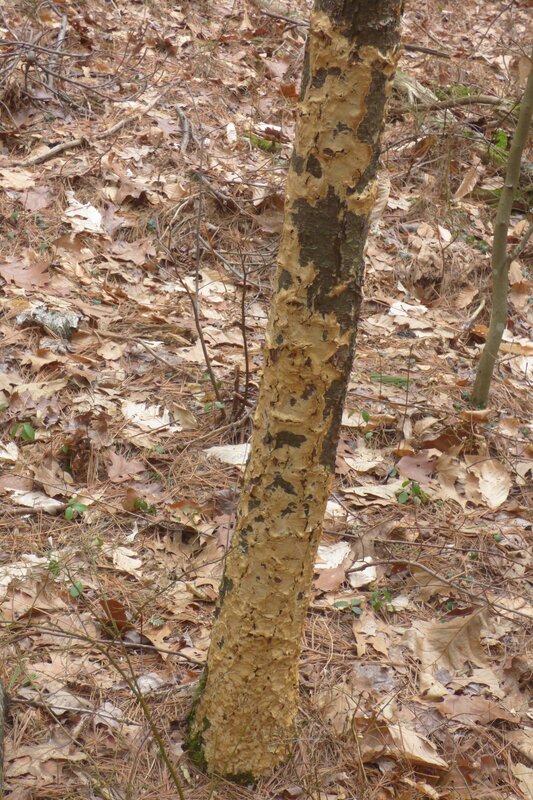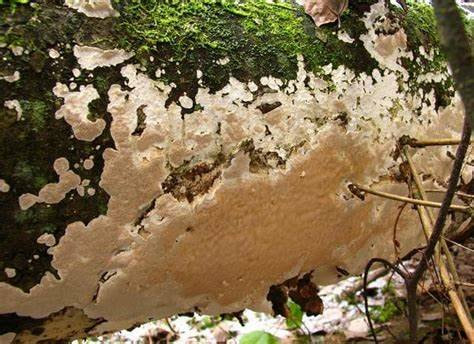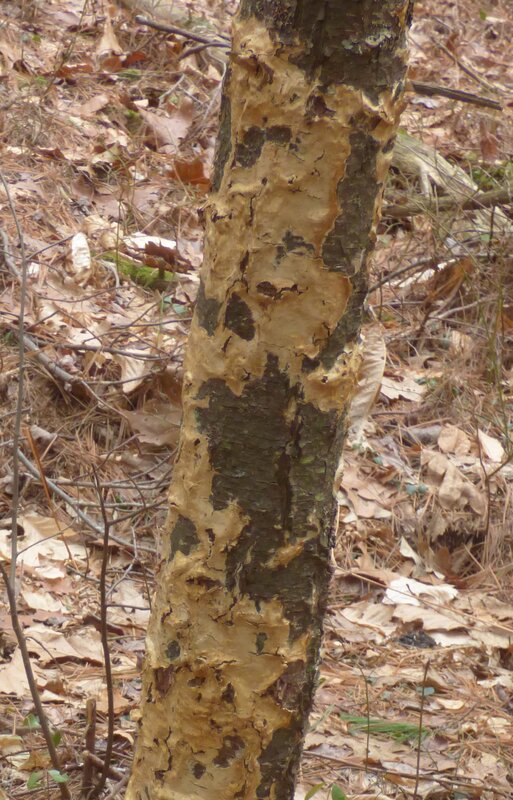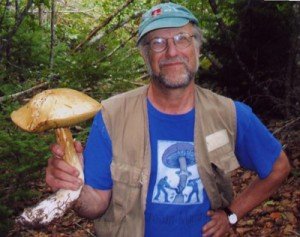| . . .that from afar look like they've had their bark pecked away so that the pale cambium layer is exposed. While walking in the woods this winter, we occasionally observed, from a distance, trees that appeared to have been severely ravaged by Pileated Woodpeckers. Usually these were small (<12 inches in diameter) and clearly dead trees, and our recollection is that they were pines. The bark removal, which is what it looked like to us, extended up and down almost the entire length of the trunk. Having rarely come upon trees with such extensive excavation, we walked over to see more clearly. What we saw--and it's embarrassing to admit how many times in subsequent hikes we continued to be lured by the illusion--was a massive fungal layer, pale in color, engulfing the tree. "What IS this stuff?!?" a few of us wondered. Finally samples were obtained and sent off to two fungi enthusiasts who have provided mushroom/fungi education at Club functions, Joe at Mass Audubon, and David Hibbett at Clark University. Fungi expert Larry Millman also weighed in after he examined a specimen we sent. Larry wrote: "Its hyphal system, basidia, spores, and substrate indicates that it’s Perenniporia subacida." The color is somewhat darker than most specimens I’ve seen of this species, but age can change colors. . . and, as Leif Ryvarden says of P. subacida, “A very variable species.” We seem to have had a bumper crop of Perreniporia subacida this winter, likely due to the extreme humidity and high rainfall of summer/fall 2018. Perenniporia is a genus that includes bracket-forming or crust-like polypores. Polypores are a group of fungi that form fruiting bodies with pores or tubes on the underside; most inhabit tree trunks or branches, consuming the wood. We're more accustomed to seeing polypores in the form of "shelf mushrooms" or brackets growing perpendicular to the trunk. The crust formations sure had us fooled until we took a closer look. Glad we did! |
Proudly powered by Weebly



